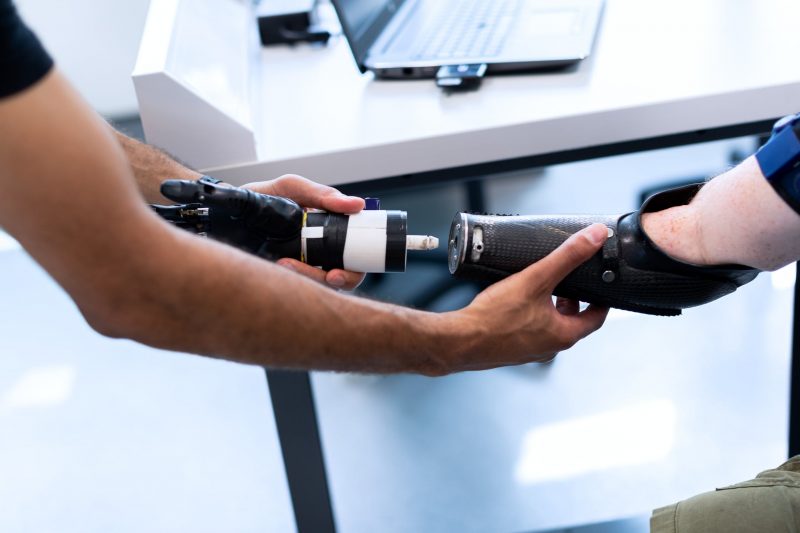More and more businesses nowadays are turning to a popular technology practice called RPA (robotic process automation) to reduce costs and streamline essential operations.
RPA solutions help companies to automate routine business processes, allowing business users to spend more time serving customers or performing other critical work. For many users, RPA is just a stopgap on the way to intelligent automation (IA) via machine learning and artificial intelligence tools.
In this post, we define what RPA is, and how businesses can make the most of robotic process automation in alignment with their principle goals.
Contents
What is RPA?
RPA stands for robotic process automation. This term is widely used for software tools that fully or partially automate manual, rule-based, and repetitive human activities. RPA act by replicating the actions of an actual human. They interact with a software application (or several) to perform such tasks as process standard transactions, data entry or respond to customer service queries.
The most evident example is any chatbot that has started to become ubiquitous on websites. It is almost always a robotic process automation tool.
Handy RPA tools do not replace the underlying business apps. They rather simply automate the already manual tasks of employees. RPA actually look at the screens that people look at, then fill in and update the same boxes and fields within the user interface by pulling the relevant data from the relevant location.
RPA tools have begun taking on characteristics of business process management tools as well as artificial intelligence tools because they get more sophisticated. It makes them even more effective.

What are the types of RPA?
- Unattended automation means that robots execute business processes in a back-office server or on a virtual machine. They work 24/7 without interruption and are triggered automatically. Unattended software robots perform processes on apps even if the application is not running, responding to changes immediately.
- Attended automation that is usually deployed in a front office environment. Such robots are installed on employee desktops. They help users to complete business processes more accurately and effectively.
- Hybrid automation combines both unattended and attended variants into a single automation enabling interaction between people and virtual workforces. People are able to initiate processes and pass certain tasks to robots with full visibility into the status of the task. Robots in their turn may pass tasks back to people when certain input is needed. An end-to-end solution that maximizes process efficiency is the desired outcome.

What are the Benefits of RPA?
The software robots are typically programmed to perform the tasks in a particular workflow by the employees with some assistance from programmers. The software doesn’t try to tweak out new efficiencies or bring new insights like big data analysis software. Instead, Robotic Process Automation solutions work like digital assistants for teams by solving simple tasks that eat up part of the workers’ day.
Therefore, we can sincerely say that RPA is a simpler product than enterprise software or artificial intelligence-driven systems.
RPA enables competitive advantages providing users with the opportunity to do what they do best as well as improves business outcomes like customer satisfaction. RPAs solve problems, empower processes, help to conduct analysis, and do other value-added work.
Here are their main advantages in detail:
Better accuracy
There is no rework and near-perfect compliance if it is 100% accuracy. Robotic process automation helps such industries as healthcare, finance, and life sciences to boost the reliability of bots to receive strict compliance standards. In accounting, RPA enables new levels of speed and precision in order-to-cash and procure-to-pay processes.
Increased productivity
RPA bots can significantly influence employees’ productivity by boosting workflows and enabling more work to get done. These bots may handle form filling and processing all hands-free in such spheres and areas as insurance, financial services, and in the public sector.
Improved customer experiences
Attended RPA bots help agents to interact with customers by acting all the system and data entry legwork. As the result, call handling time (AHT) is reduced. Life sciences and the telecommunication sphere apply bots to streamline customer inquiry handling and smoothly respond to spikes in call volumes.
Quick ROI and cost savings
Thanks to the code-free interface, users can quickly master bot creation and start driving ROI. It means that an employee may regain 40% of his/her time each day that was wasted on manual administrative tasks. For example, in healthcare, the value of automating is amplified by the critical importance of error-free process execution.
Integrating capability
There is no need to upgrade or replace existing systems for RPA to work because robotic process automation is application agnostic. Bots connect enterprises across all software tools regardless of departments and functions in the front office and back office.
AI appliance
When RPA is combined with AI (artificial intelligence) in order to create Intelligent Automation, automating extends and allows utilizing on the 80% of enterprise data that are unstructured. You can apply invoice processing of non-standard vendor invoices in the procure-to-pay sphere. In HR, you may automate request intake by clarifying the employee’s intent.
Advanced scalability
RPA makes global business processes more elastic and adaptable to changing environments. You can flexibly handle workloads by expanding the digital workforce at any required moment.
Would you like to know some great examples of outstanding RPA tools? Do not hesitate to dive into one of our previous articles titled
“7 Robotic Process Automation Tools That Will Lead to Success“





